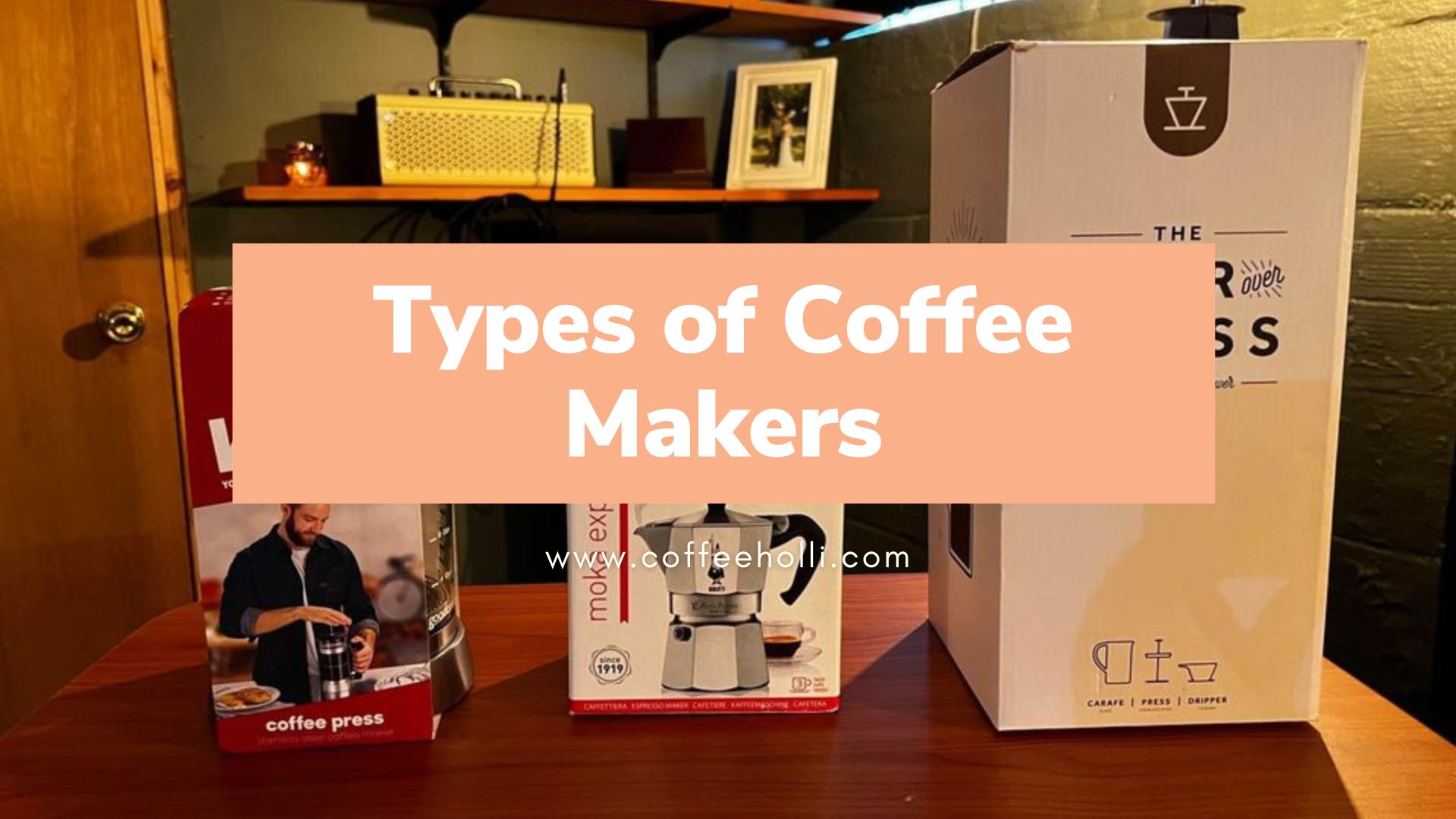Obviously:
It may seem easier to order coffee at Starbucks.
However, there’s always that unmatched level of satisfaction that comes with preparing coffee at home (or work).
Right?
Well, anyone, who’s done it can relate. But…
There is a catch.
In essence, a homemade cup of joe is partly as good as the coffee maker used.
And with numerous types of coffee maker machines available, it’s essential to learn about each; to find the right one for your needs.
That’s why you’re here, right?
Well, here’s a list of the best coffee makers (both electric and manual) in the market today.
Table of Contents
8 Best Coffee Makers to Buy Today
1. Home Espresso Machines
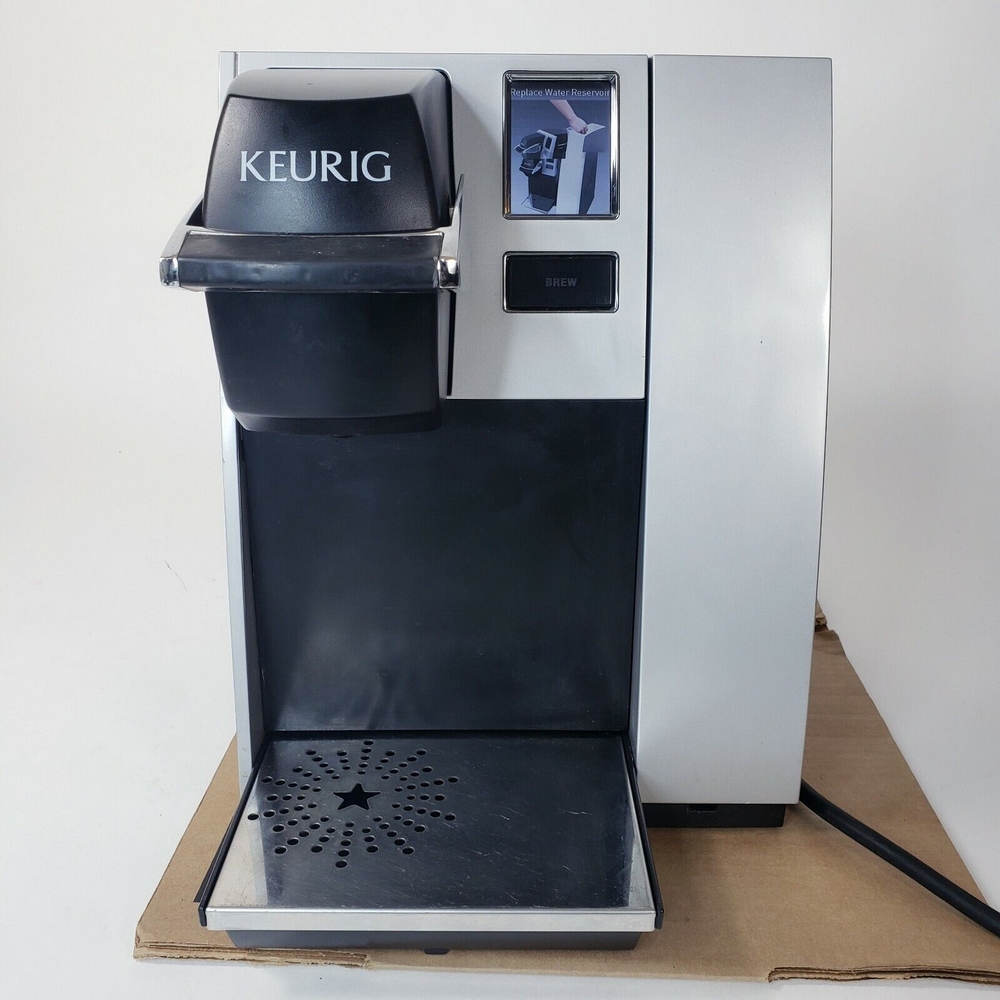
| Type | Electric |
| Cost Rating | $$$ |
| Prepares | Latte, Cappuccino, Mocha, among other espresso drinks |
On any slow morning, a shot (or two) of espresso always does the trick.
Even better, having a home espresso machine means that you won’t have to wait in line at your usual cafe for this much-needed pick-me-up.
And don’t even get me started on dealing with rude, grumpy baristas.
Now:
Unlike most coffee makers, an espresso machine is multifunctional. It can brew different types of espresso drinks and froth/steam milk.
And, like most coffee makers, this machine prepares espresso by passing heated water through pressed coffee grinds. The only difference is that, here, the process is more refined; using known variables to prepare a cup.
And the best part is that you can get your espresso ready in a matter of minutes just after you get out of bed.
Muy Bueno, right?
Pros
- Multifunctional
- Very consistent brewing
- Great for all kinds of espresso
- Easy to use once you learn how to
- Can froth/steam milk
Cons
- A little pricey
- Brewing volume limitations
2. Drip Coffee Makers
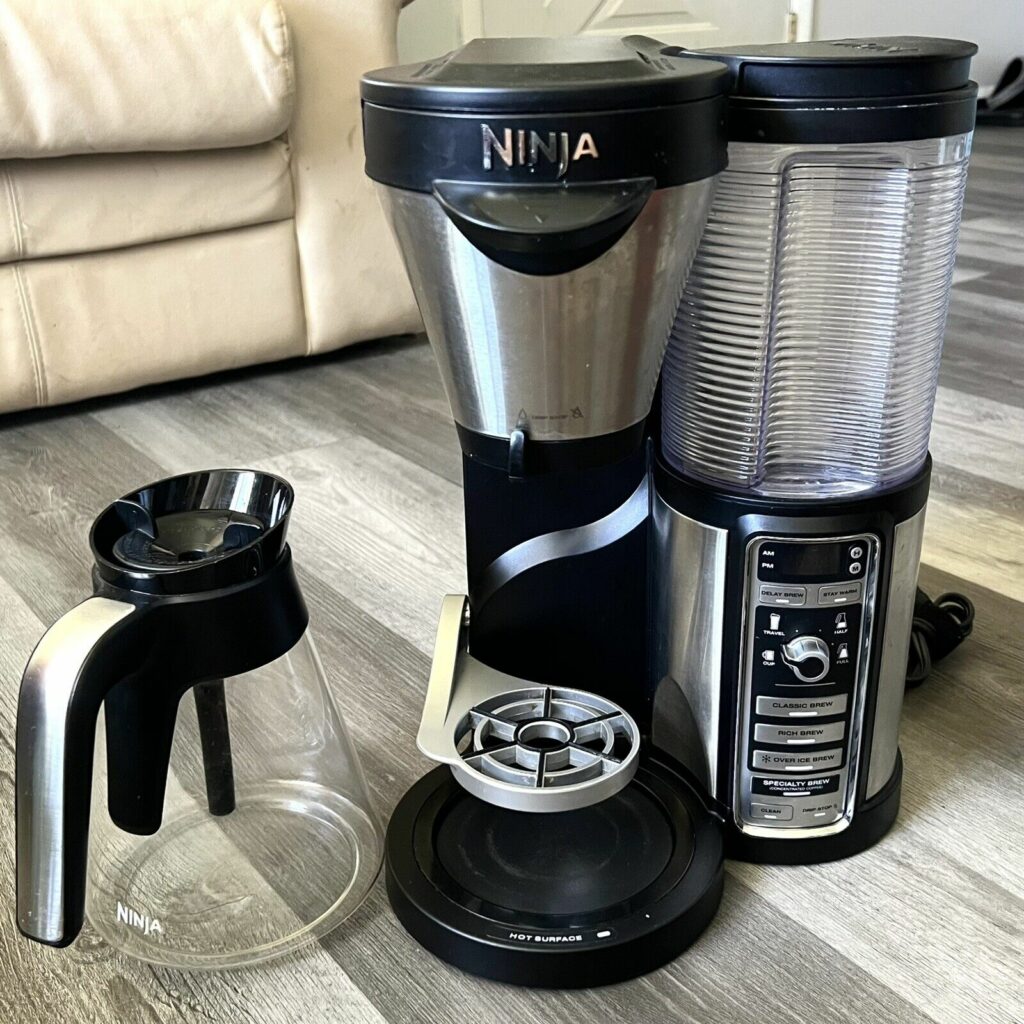
| Type | Electric |
| Cost Rating | $$ |
| Prepares | A Typical Cup of Coffee |
Whether it’s at home or the office, having a Drip coffee machine comes with immense benefits.
How?
These machines are fast, reliable, and very user-friendly. In essence, it only takes a few button presses on a drip coffee maker to brew up to 14 cups of coffee.
This makes it ideal for busy office environments, big families, or anyone who can’t live without coffee.
Anyway:
Drip coffee makers work by passing heated water through ground coffee (in a filter) to create a nice brew of java.
Note:
The best way to enjoy coffee from a drip maker is to drink it as soon as it’s brewed.
Why?
Leaving the carafe on the warming plate can overcook your coffee, thus, negatively affecting its taste and flavors.
Pros
- Reliable
- User-friendly
- Fast
- Ideal for places with numerous coffee drinkers
- Fairly affordable
Cons
- The warming plate can overcook your coffee
- Designed to brew one thing – coffee
3. French Press Coffee Maker
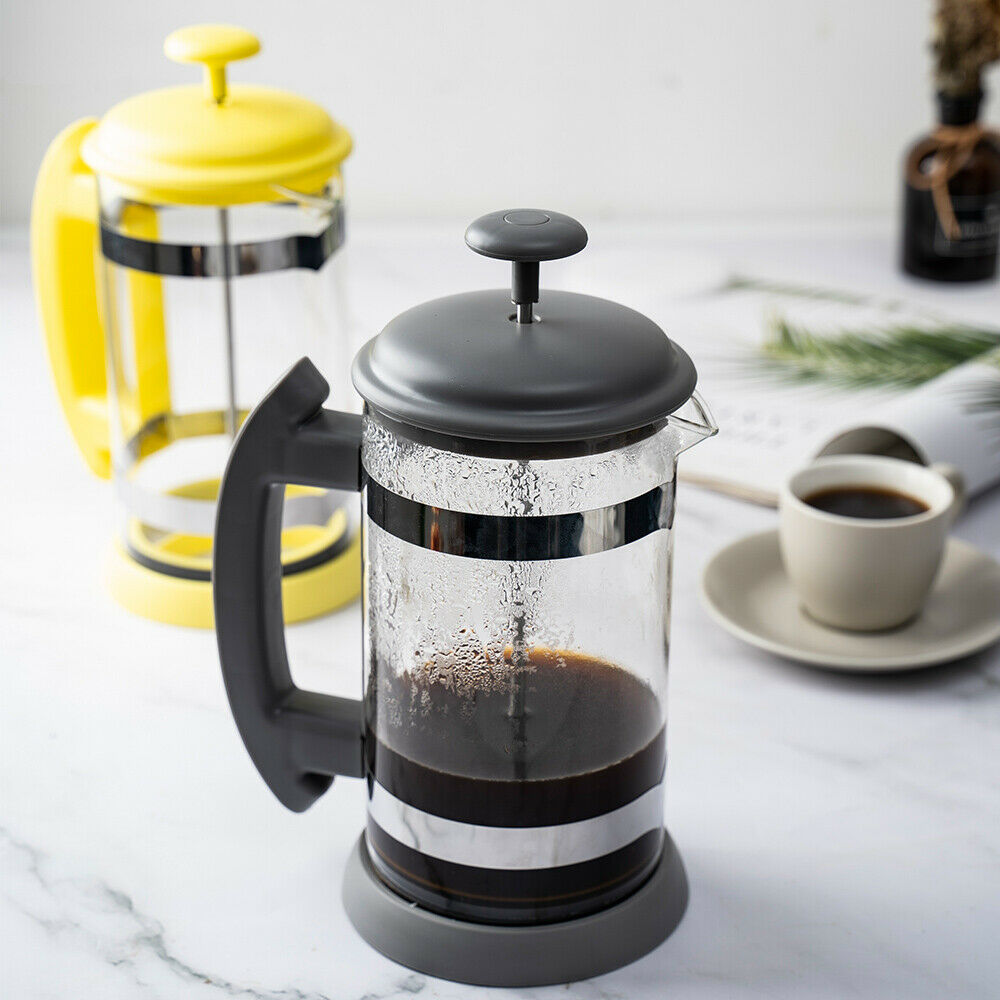
| Type | Non-Electric |
| Cost Rating | $ |
| Prepares | A Typical Cup of Coffee |
A French Press is simple, affordable, and just as effective.
It’s the best option for anyone looking for a budget-friendly coffee maker that doesn’t rely on electricity to work.
Its small size makes it portable, plus, the stainless steel filter ensures that no flavors get lost.
For a French Press, the methodology is simple. First, pour boiled water into the carafe and add coffee grinds. Let it sit for a minute so that the flavors can be extracted from the grinds.
Then:
Use the plunger to filter the grinds down to the bottom of the carafe. This will leave you with a flavor-rich, full-bodied coffee brew.
Simple, right?
Pros
- Very user-friendly
- Affordable
- Efficient coffee maker
- Portable
- Easy cleaning and maintenance
- Makes flavorful and full-bodied coffee
Cons
- French Presses with glass carafes are a bit fragile
- Cools coffee rapidly
4. Thermal Coffee Makers
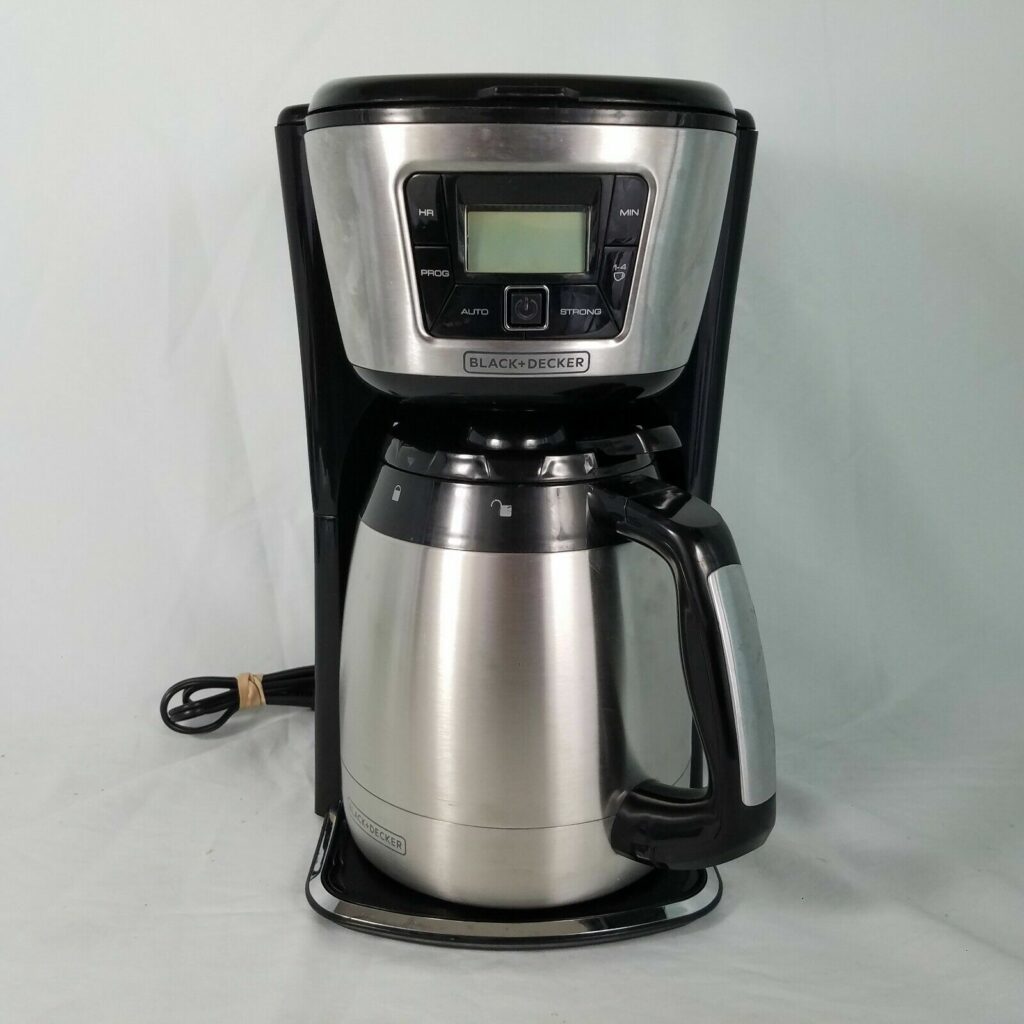
| Type | Electric |
| Cost Rating | $$ |
| Prepares | Normal Coffee |
Now:
The biggest issue with using Drip coffee makers is the fact that coffee tends to overcook if left on the warming plate for an extended period.
To avoid that, you can opt for a Thermal Coffee Maker.
Why?
Both operate similarly, however, thermal coffee makers have an insulated carafe that keeps your coffee hot for hours.
This ensures your coffee doesn’t overcook or turn bitter.
But, there’s a catch.
Because of the insulation, thermal carafes hold less coffee and are harder to clean than glass carafes.
Pros
- Keeps coffee hot for hours without overcooking
- Easy to use
- The carafe’s exterior is much cooler and safer
- Fairly affordable
- Fast and reliable
Cons
- Slightly more expensive than Drip Coffee Makers
5. Moka Pot (Stovetop) Coffee Makers
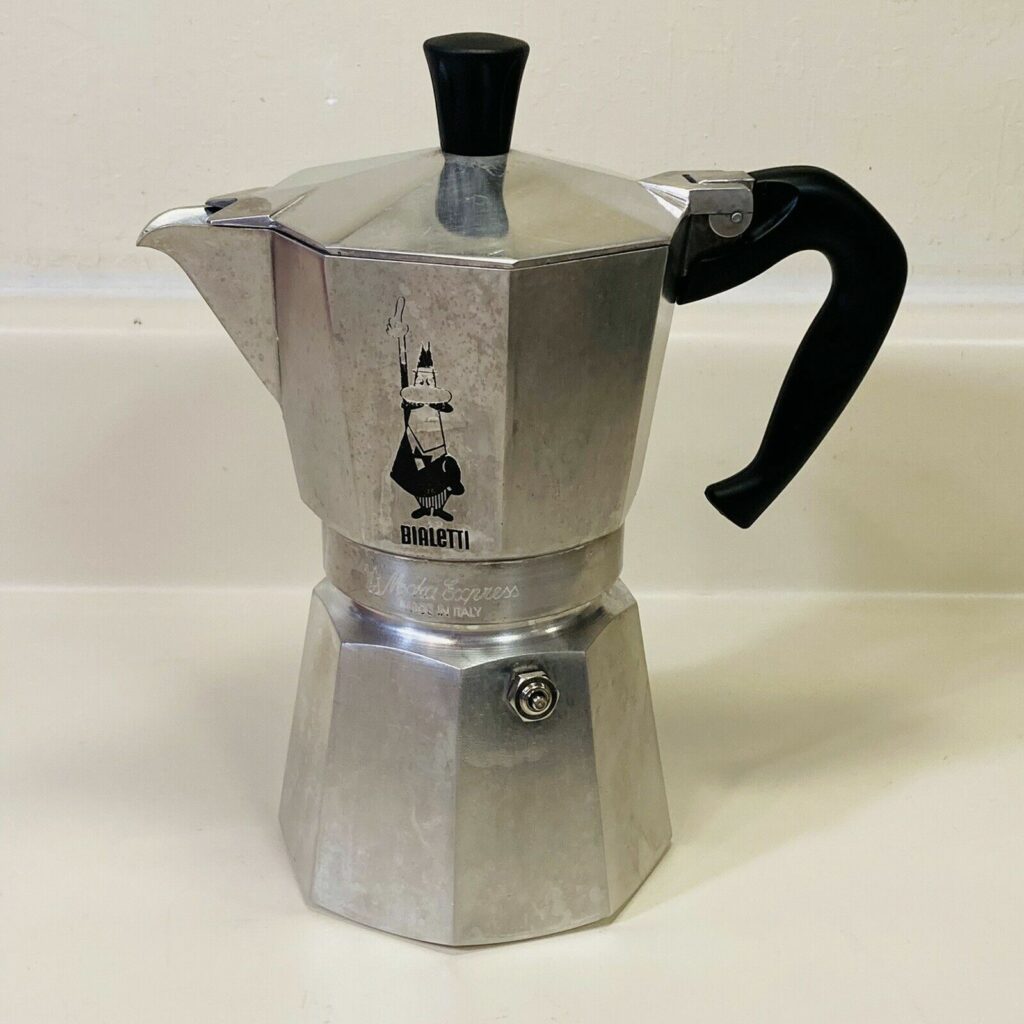
| Type | Non-Electric |
| Cost Rating | $ |
| Prepares | Espresso-Like Coffee |
Now:
A Moka Pot coffee maker is one way to enjoy espresso without needing an expensive espresso machine.
This is a simple, stovetop maker that’s not only great for brewing espresso but also impressively portable.
Get this:
A Moka Pot can quickly prepare potent, dark, and flavor-rich coffee for various espresso drinks. It does so by using steam to push hot water through coffee grinds and into the top reservoir.
Then:
The pressure build-up from boiling water and steam allows for more extraction of coffee flavors and oils from the grind.
Hence, the dark, flavorful, espresso-like brew at the end.
Pros
- Cost-effective alternative for espresso machines
- Very portable
- Easy to use
- Ideal for camping trips
- Fast brewing
Cons
- For stovetop use only
- Not so easy to clean
6. AeroPress Coffee Maker
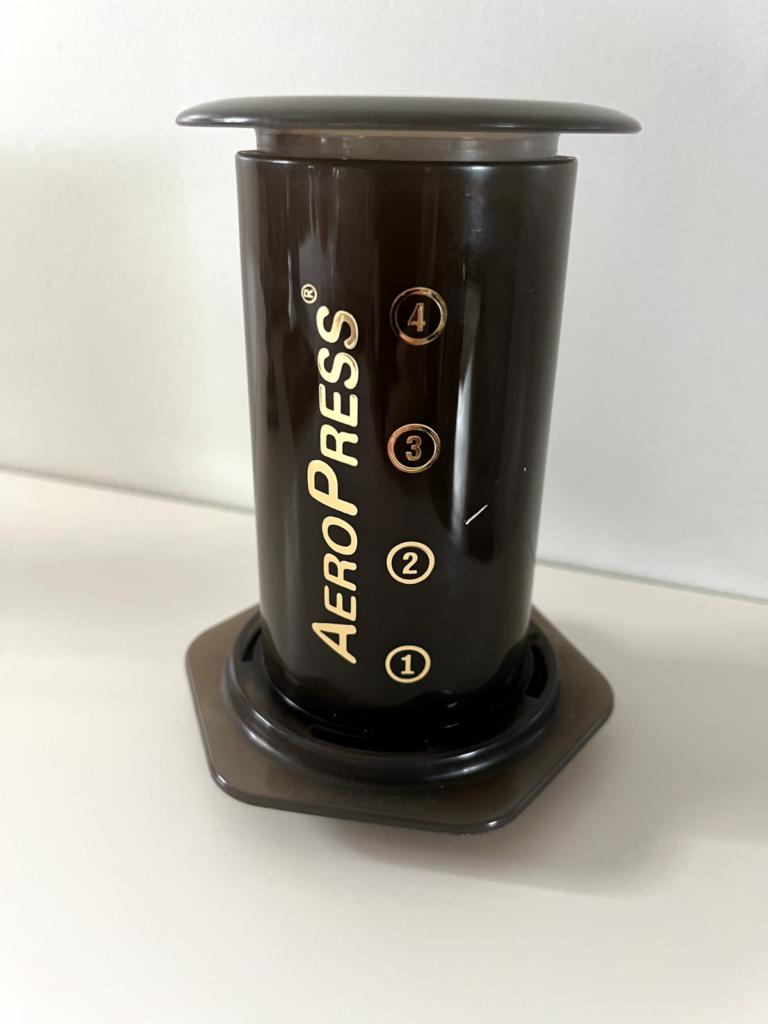
| Type | Non-Electric |
| Cost Rating | $ |
| Prepares | Quick Cups of Espresso-Like Coffee |
If you love the French Press but wish it could work faster, the AeroPress Coffee Maker is a better and cheaper alternative.
Plus, this maker prepares coffee that’s just as good as the Moka Pot i.e. espresso-like.
Now:
Since preparation is done in under a minute, the resulting beverage is smooth but still dark and flavorful.
More so, this maker is highly portable, easier to clean than a French Press, and more affordable than a Stovetop coffee maker.
Even better:
You can use it to prepare a cold brew.
Pros
- Very affordable
- Great option for travelers
- Quick and easy espresso maker
- No cleaning hassles
- Makes more than one cup of espresso
- User-friendly
Cons
- A little labor intensive during preparation
7. Cold Brew Coffee Maker

| Type | Manual |
| Cost Rating | $ |
| Prepares | Cold Brew Coffee |
I call it the “no-rush coffee maker.”
Why?
Because brewing coffee using a Cold Brew coffee make can take up to 24 hours. However, the resulting beverage is often fuller, deeper, and rich in flavor.
Generally:
This maker is quite reliable, easy to use/clean, and ideal for people who love authentic coffee flavors and aromas.
Moreover, the brewing process produces coffee that is less acidic and smoother than other brews.
How does it work?
Well, a Cold Brew coffee maker doesn’t need much. Just steep coffee grinds (using the filter inside the brewer) in cold or room temperature water. Then, let it set for 12 to 24 hours.
And voila, your coffee is ready to drink.
Pros
- Doesn’t require heating
- Full-bodied coffee with authentic flavors
- Prepares more coffee than most makers
- The resulting drink can be served as either hot or cold
- The brew can be refrigerated for up to two weeks
Cons
- Brewing takes time
- Uses up more coffee grinds
8. Siphon (Vacuum Pot) Coffee Maker
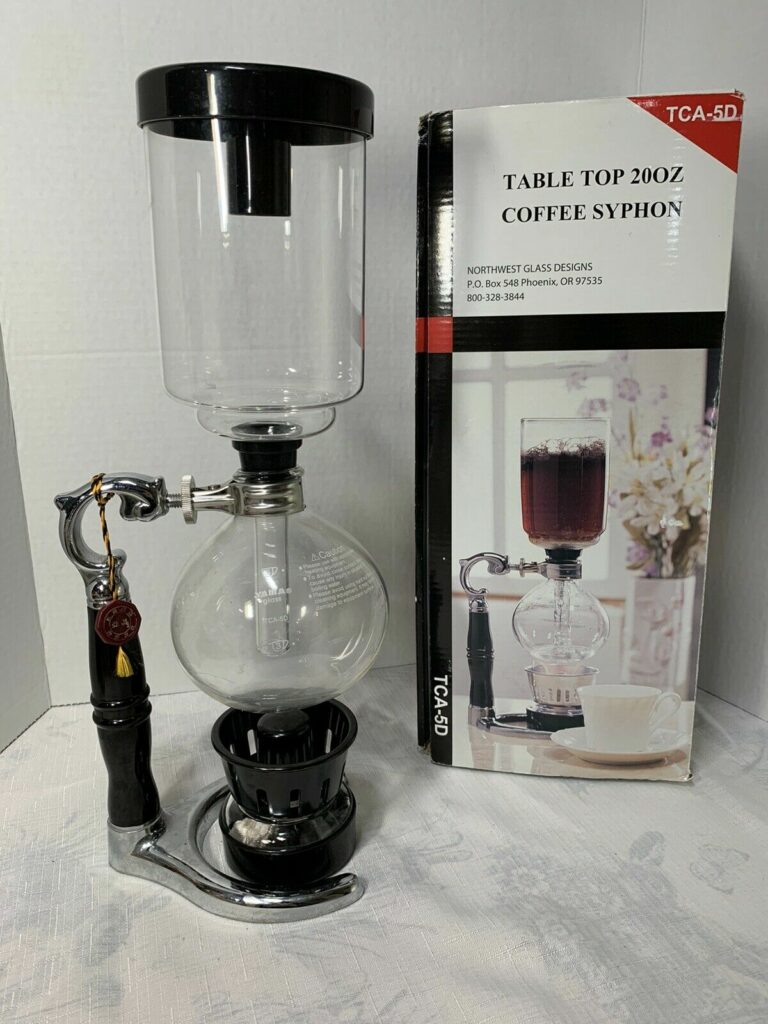
| Type | Manual or Electric |
| Cost Rating | $$ |
| Prepares | An Aromatic Cup of Coffee |
Now:
A Siphon Coffee Maker is a work of art known to produce luscious cups of java.
However, it requires time and patience to prepare a pot (sometimes up to 5 cups, depending on the size of your container).
Plus, it’s a labor-intensive process, especially, if you’re using a manual Siphon coffee maker.
But:
The resulting brew is not only tasty and aromatic but also deep and rich in flavors.
Get this:
The process is much like Moka Pot preparation. The only difference is that, here, the top container contains ground coffee and a filter at the bottom.
Once the steam from the bottom container is forced into the top container, a vacuum is left on the bottom container.
Then:
Once cooling begins and complete condensation occurs on the top container, the vacuum sucks back the coffee brew mixture from the top; through the filter. Hence, the name “siphon.”
Pros
- Produces well-brewed coffee
- Full-bodied flavors
- Very intricate process
- Available as either non-electric or electric
- Very efficient coffee brewing
Cons
- Very labor intensive
- Takes time
- Too many delicate parts
To Sum It All Up…
Obviously:
There are many other types of coffee makers; each with its preparation process and resulting drink.
However, your goal should be to know about each; so as to manage your expectations. Luckily, the list above highlights eight of the best and most popular coffee makers available today.
Well:
Did you find the best one for you?
Which one is it and why? Feel free to share your thoughts and questions in the comments below. Always happy to hear from you.
Frequently Asked Questions
Coffee makers can be categorized into two – electric and manual (non-electric). Examples of electric coffee makers include Espresso Machines, Drip Coffee Makers, Thermal Carafe Coffee Makers, Percolators, Siphon Coffee Makers, And Grind & Brew Makers among others. On the other hand, popular manual coffee makers include the French Press, Moka Pot, AeroPress, Cold Brew Mug, Phins (Vietnamese), Ibrik (Turkish), and Pour-Over coffee makers.
Drip Coffee Maker (if you prefer electric) or French Press (for manual).
The biggest coffee makers in the market today are Espresso Machines. They are a little complicated to learn but also multifunctional, consistent, and super convenient.

